If you’re looking for Hawaii vacation ideas, head to the Big Island! With just seven days, you’ll want to make every day on your Big Island itinerary count!
It’s one of the best places to vacation in Hawaii. While Maui feels fancy with its resorts and Kauai feels wild and undeveloped, Big Island, Hawaii offers a little of everything with black lava beaches and one of the most astounding national parks in the USA. So, read on for the best things to do on the Big Island!
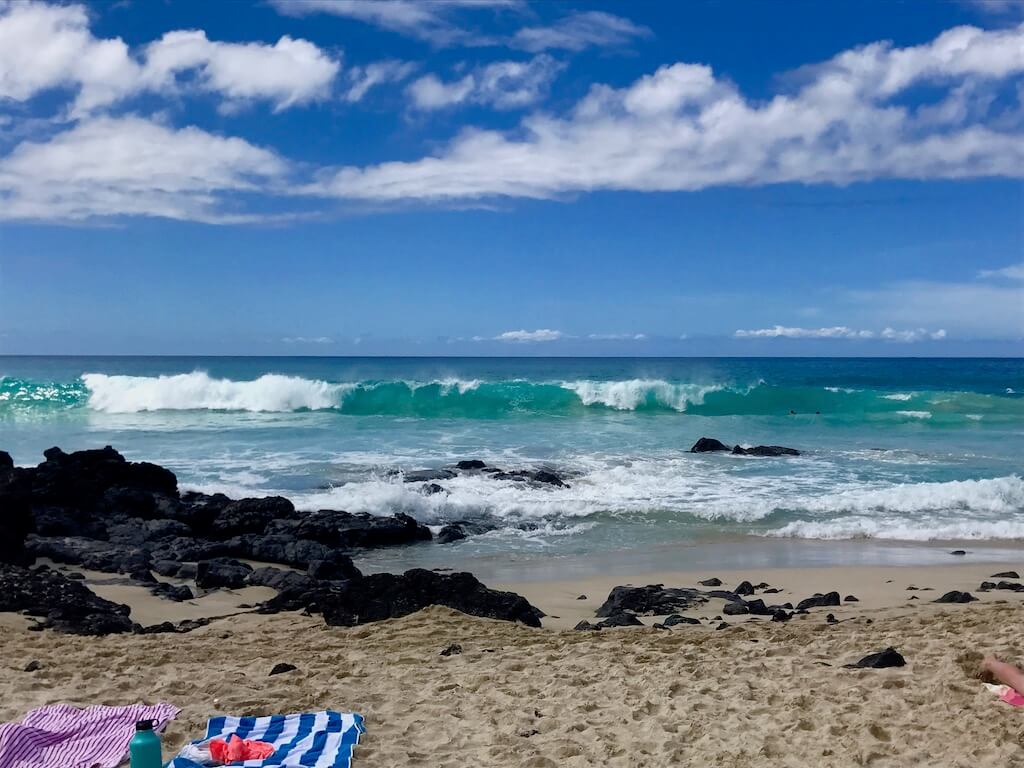
Contents
Big Island Hawaii Itinerary
With so much to see, I recommend considering at least a 7 day Big Island road trip itinerary. Start with three days on the Kona side of Hawaii’s Big Island (where you’ll arrive on your international flight).
Then spend two days at Volcanos National Park in the middle of the island, and the last two days on the lush (but rainier) eastern side of the island based in Hilo.
If you’re here primarily for Big Island beaches and snorkeling, add more days in Kona, Hawaii. (Snorkeling Kona is a bucket list experience.)
If it’s lush rain forest and dramatic waterfalls you’re after, spend more time in Hilo. Volcanos National Park is also worthy of a week all on its own for serious hikers.
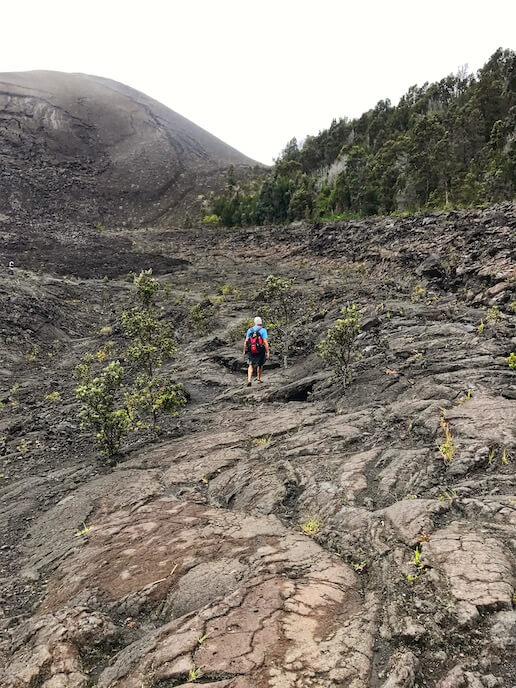
Flying into Kona can be a bit disorienting at first when you land on what looks like a lava moonscape if you were anticipating a lush beach scene. But don’t worry!
Unlike, say, Maui and Kauai, the Kona coast is mostly composed of hardened lava.
That’s because the Big Island is younger than other Hawaiian islands, with active volcanoes. That also means the island is home to some incredible black and green sand beaches.
Read more on Hawaii travel:
• How to spend a week on Oahu
• What to do in Kauai
• How to plan a Maui vacation
Day 1 Big Island: Snorkel South Kona
There are so many great things to do on Big Island, Hawaii!
On your first day, a great way to get the lay of the land (and sea!) is to book a full-day boat tour for snorkeling prime spots. It’s one of my favorite Big Island day trips.
As you nose your way in and out of sea caves on the boat, keep a lookout for Hawaiin green sea turtles, manta rays and spinner dolphins here.
You’ll also likely pass Pele, Goddess of Fire, hidden in the rock formations on the cliffs of Kona along the way.

On your tour, you’ll no doubt head to Kealakekua Bay, a beautiful little protected bay and the premiere snorkeling destination across all of the islands that make up the state of Hawaii. It’s a famous landmark here.
The variety of neon-colored fish we saw here remains unmatched among any other snorkeling destination we’ve so far enjoyed in Hawaii.
The bay is home to the Captain Cook Monument, which marks a decisive battle between the natives and the first European to reach the Hawaiian islands in 1779. The challenge is, of course, overcrowding due to its popularity.
When we visited, there were strict and convoluted rules about how people could access the bay independently of a tour, which is a good thing. Respect the rules and visit by boat.
You can check prices on a snorkel tour here.
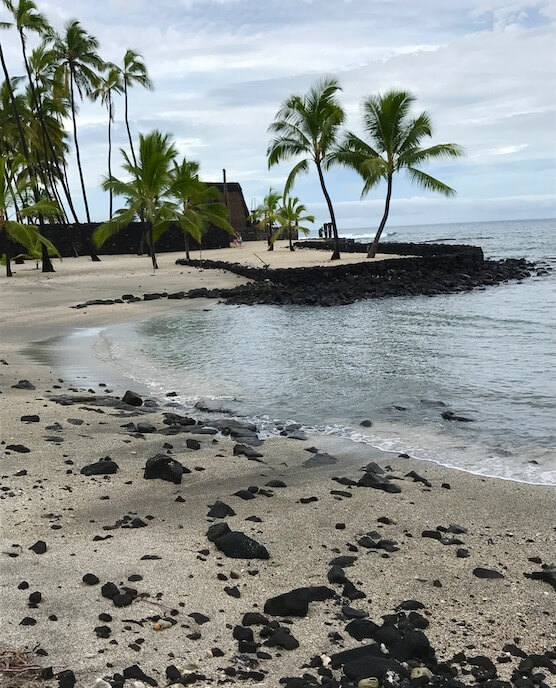
Where to stay in Kona, Hawaii
By the beach, of course! I’ve curated a list of the very best condos and homes in Kona for you here.
Quick answer (and a hotel option):
1. Oceanfront condo. This drool worthy home offers unobstructed panoramic ocean views with 32 foot floor to ceiling windows. Relax in the oceanfront swimming pool.
Guest review: “Amazing location with beautiful views of the ocean and Kona sunsets. Apartment was well stocked, comfortable, and cozy.” —Carol C., Feb 2021
Check price and availability on the oceanfront condo here.
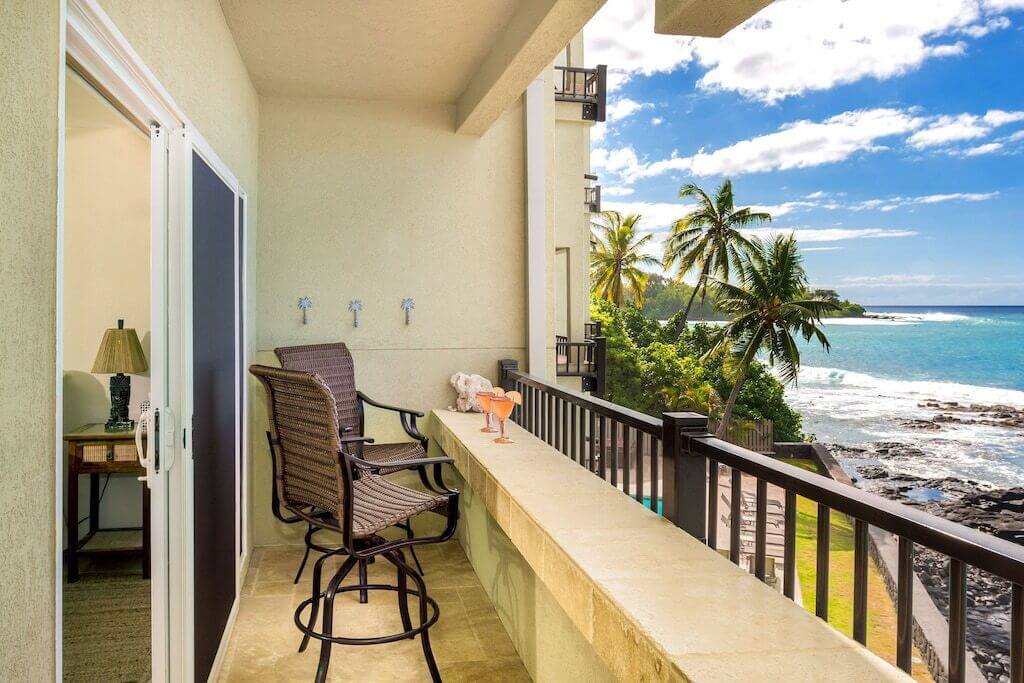
Or:
2. Royal Kona Resort. Conveniently located in Kona, the Royal Kona Resort offers a view of beautiful Kailua Bay with a private beach, saltwater lagoon, onsite Asian Fusion restaurant, and outdoor swimming pool.
Plus, no resort fees! Rooms come with lanais, too. We can personally vouch for the sunset Mai Tais at the Royal Kona’s open-air tiki lounge. Check prices and availability at the Royal Kona Resort here.
There are lots of hostels on Big Island too!
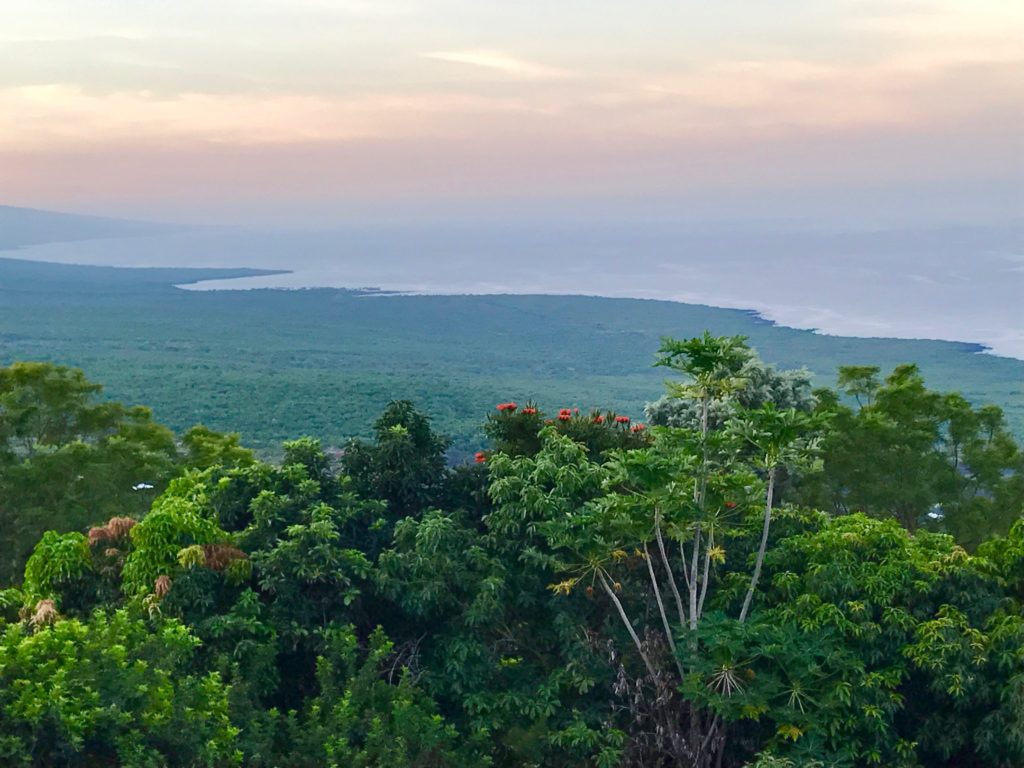
Day 2 Big Island: Night Swim with Manta Rays
Begin your day at Place of Refuge, otherwise known as Pu’uhonua o Honaunau. It’s a historical Hawaiian treasure you need to visit, both on land and by sea.
If the water is calm, you can snorkel here too, powered by warm turquoise waves. Watch out south of this point though…the waves are strong!
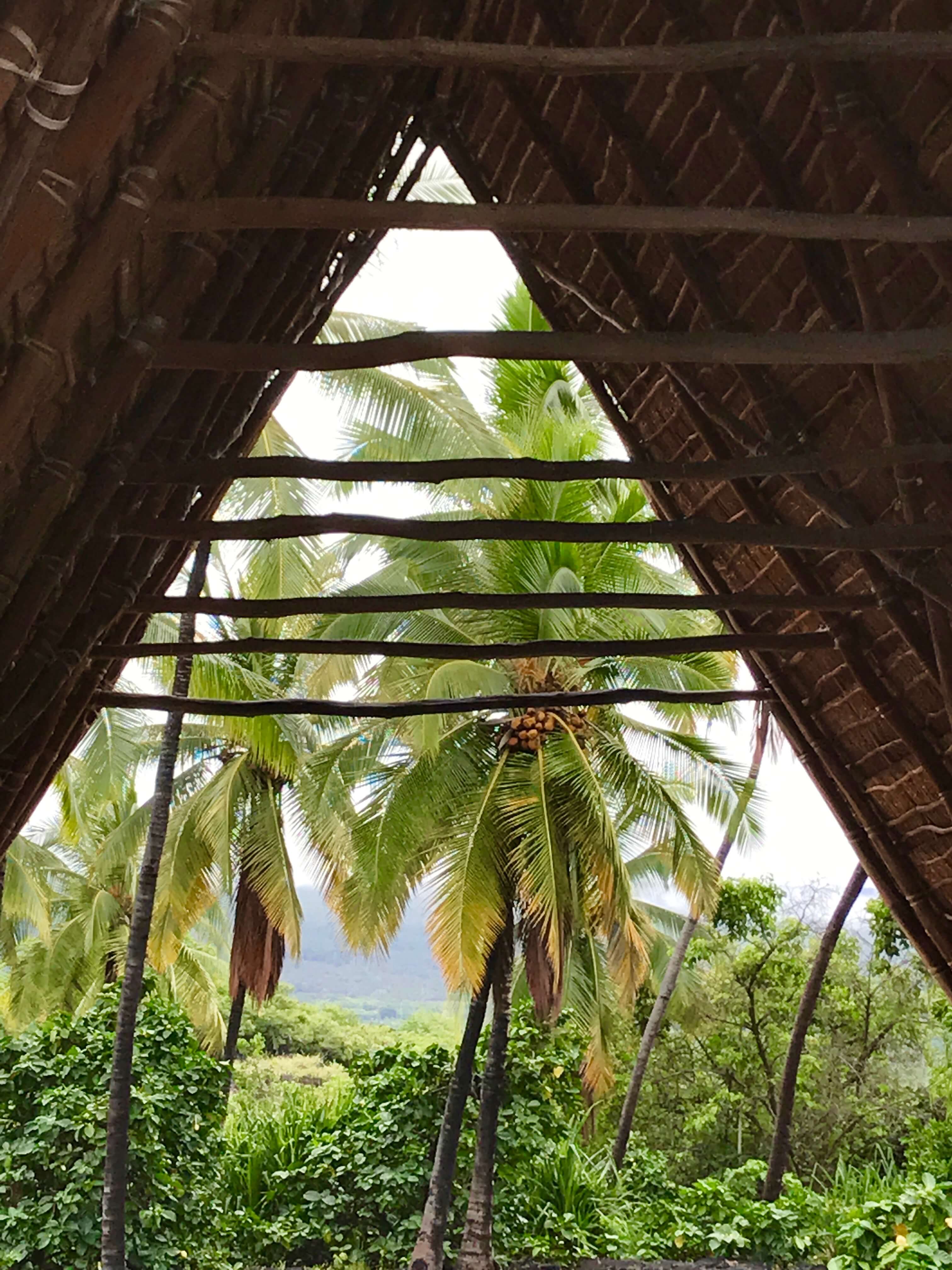
Other Big Island Day Adventures
1. Astronomy adventure at Mauna Kea. Enjoy a sunset and stargazing experience like no other, Mauna Kea is the highest point in the Hawaiian islands!
Check price and availability on this epic full day adventure here.
2. Big Island in a Day. Leave the driving to someone else on this full day nature tour that takes you to black sand beaches, thundering waterfalls, and Hawaii Volcanos National Park.
Check price and availability of the Big Island in a Day tour here.
3. Voyagers of the Pacific Luau. Sip mai tais as you immerse yourself in Hawaiian culture. You’ll enjoy a shell lei greeting, lei workshop and traditional Imu ceremony and dinner.
Check price and availability on the Voyagers of Pacific Luau.
Why is it called “Place of Refuge?” Until the 19th century, if a Hawaiian broke a “kapu” (i.e., ancient law), he was protected from certain death if he could elude his captors and make it here.
A few powerful chiefs lived just outside its boundaries. And yet, defeated warriors were still safe here.
Place of Refuge offered a peaceful secluded bay for snorkeling on the day we were there.
I even cavorted with a small sea turtle for a few minutes. It was incredible to view the totems from the water.
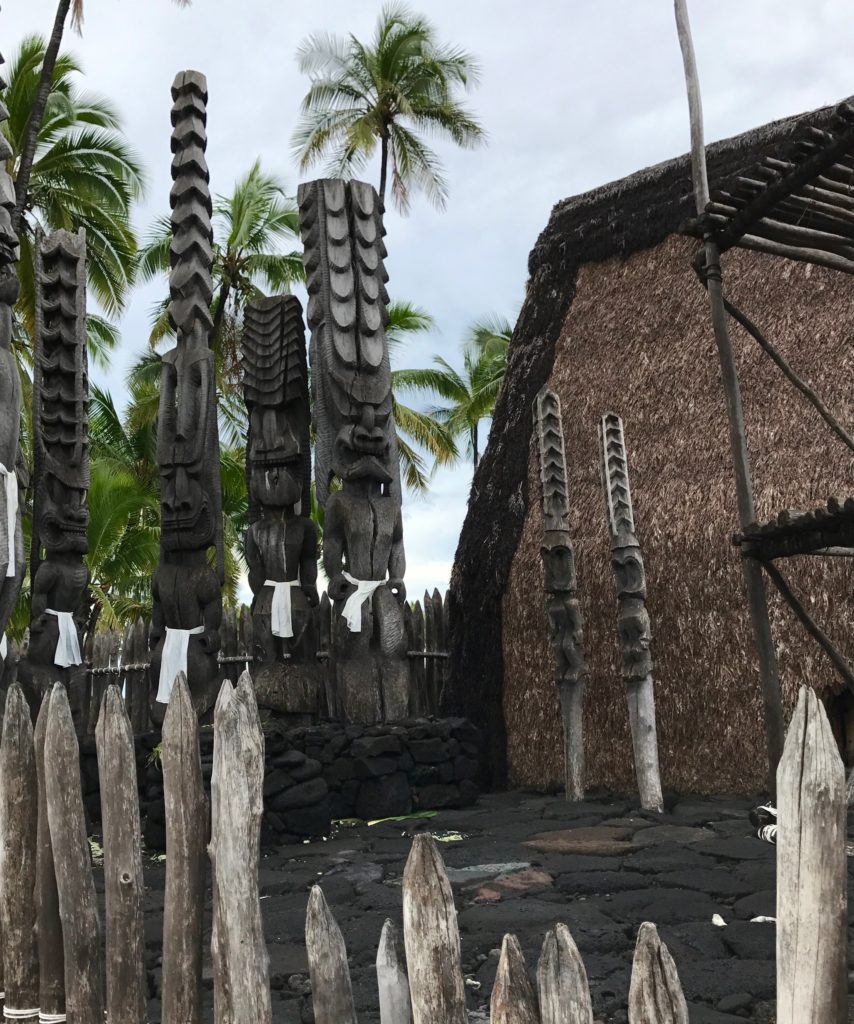
Night Swim with manta rays? Yes, really! Unfortunately, we missed this bucket list experience because we didn’t book ahead. Don’t be like us.
More organized travelers eagerly shared their enthusiastic endorsements and photos with us.
So how did this opportunity come to be? The story goes like this: Back in the late seventies, the Sheraton Kona Resort decided to illuminate the waves for guests’ nighttime viewing pleasure.
That attracted loads of plankton, which in turn, attracted the giant manta rays that learned that the lights meant a ready source of food.
Today, you can head out at night with a tour company for an awe-inspiring intimate encounter with these gentle giants either in a group dive, if you are SCUBA certified, or while floating on a giant Styrofoam noodle if you are a snorkeler.
Traveler review: “Moonlight manta snorkel: 10/10! We saw at least 18 or more massive manta rays, they swim right up to you and it is spectacular. The crew was great and experience overall was outstanding.”
—Holly Z.
You can check out price and availability of the night swim with mantas here.
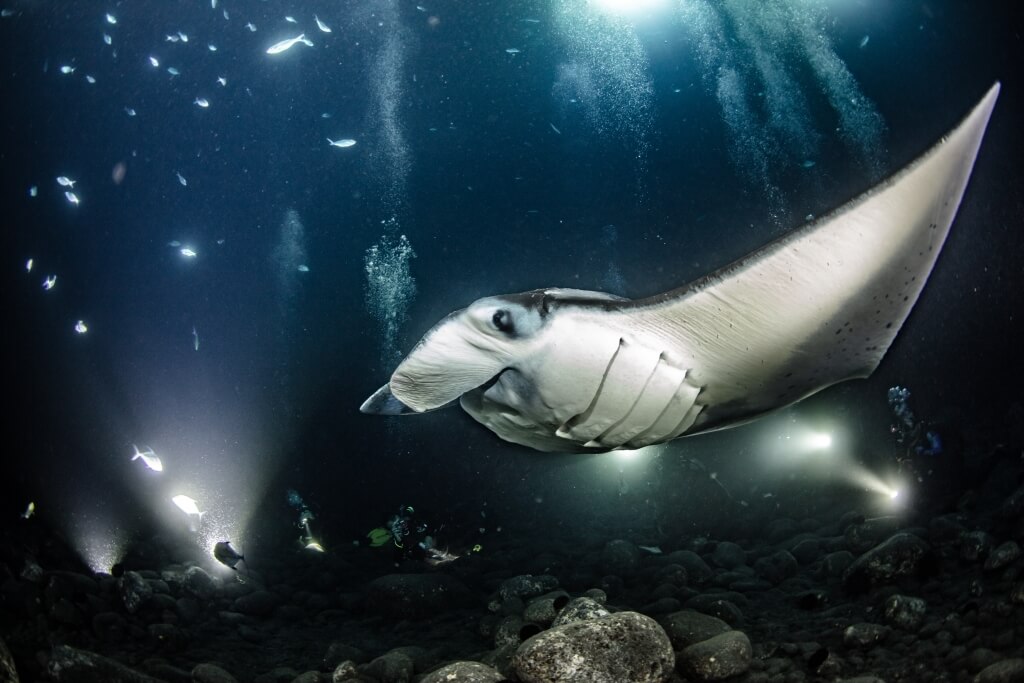
Or, if you missed this opportunity as we did, you can catch glimpses of the manta rays for free by hanging out at the Sheraton Kona bar after 8 pm for best viewing.
We caught glimpses of several in the hour we watched under a misting rain.
How to Rent a Car on Big Island
My top two recommendations are:
1. Discover Cars has no hidden fees, 24/7 customer service, and free cancellation. They search all the major rental car companies so you don’t have to.
Check price and availability on rental cars here.
2. Turo is like Airbnb for cars. It saved us $$ during the pandemic on our Hawaii rentals when rental car prices were sky high.
Day 3 Big Island: Dreamy Black Lava Beaches
If you’re wondering what to do on the Big Island, look no further than the beaches!
Despite the rocky coast, there are so many stunning sandy beaches tucked into the volcanic rock for snorkeling or diving, and they lie mostly on the Kailua Kona coast.
One of our favorites was Manini’owali/ Kua Bay, which is a little over a half-hour drive from Kona.
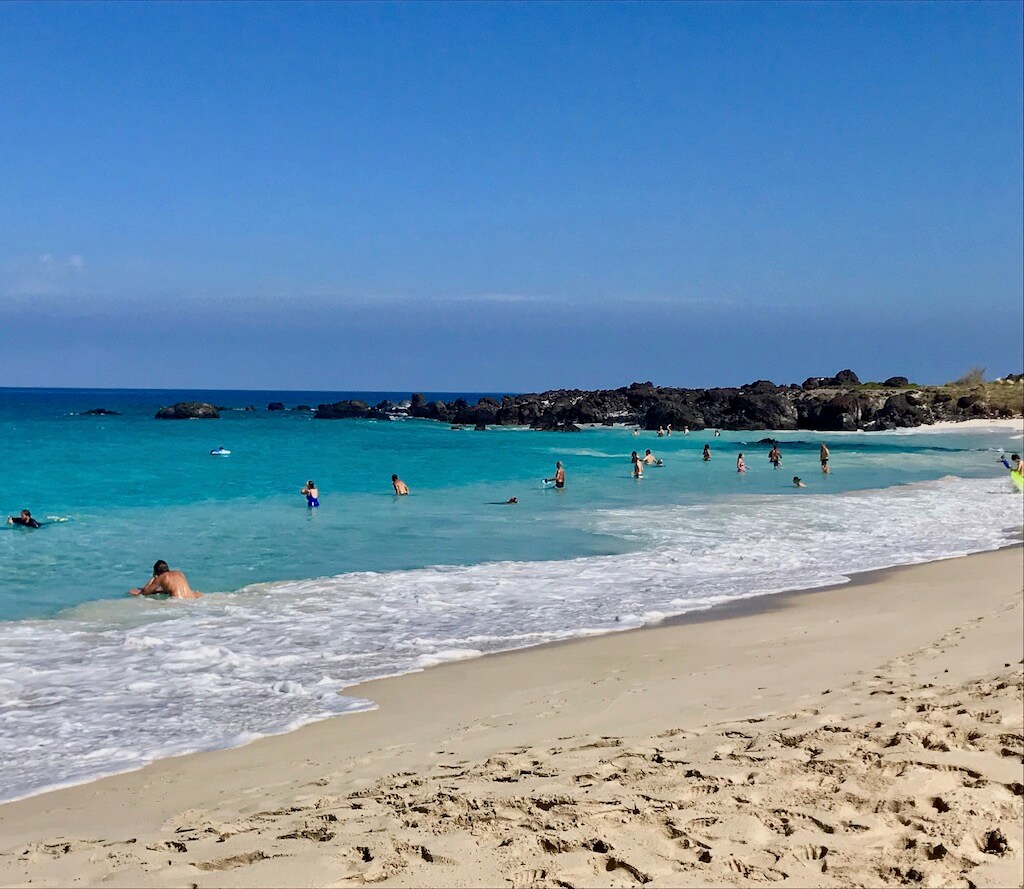
It’s worth devoting a day to exploring beaches on the Kona side if you’re headed across the island soon.
While it’s lush and jungly, there are far fewer sandy beaches to enjoy on the Hilo side of the island. (See below, however, for snorkeling options.)
If you’re interested in exploring the coast north of Kona on the west side of the island, check out Maua Kea Beach and Hapuna Beach as well.
Kua Bay (also known as Manini’owali Beach) also gets top raves from travelers. Or drive to the summit of Mauna Kea, a dormant volcano. It’s one of Hawaii’s best known landmarks.
The Top 3 Things You Need to Pack for Big Island
Go Pro—The #1 thing I wished I’d brought on my first trip to Hawaii.
Turkish beach towel—Welcome to your new favorite towel.
Keen shoes—For crossing streams, muddy hikes, and avoiding sharp coral in the ocean. (It’s the most popular single item readers buy on my detailed list of what to bring to Maui.)
We capped our lovely beach day with a sunset Mai Tai at the gorgeous tiki bar at Royal Kona Resort. (The annual Mai Tai Festival they hold there in August sure looks like fun!)
Day 4 Big Island: Hike Volcanos National Park
It’s just a 90-minute drive around the southern tip of the island to the incredible Hawaii Volcanoes National Park so it makes a great stop on the way to Hilo on the east side of the island. It’s one of the best spots in Hawaii.
You could also stop at the Green Sand Beach en route if you want to devote half a day to making this drive. (Driving all the way down to the beach is illegal though as it damages this fragile area. In fact, it’s prohibited by all rental car companies on the island. Plan on a 2.5 mile hike instead.)
On your way from Hilo, stop at The Coffee Shack for an island-style breakfast or a cup of Kona coffee.
While the food is just adequate, it offers a stunning ocean view as your climb in altitude away from the Kona coast.
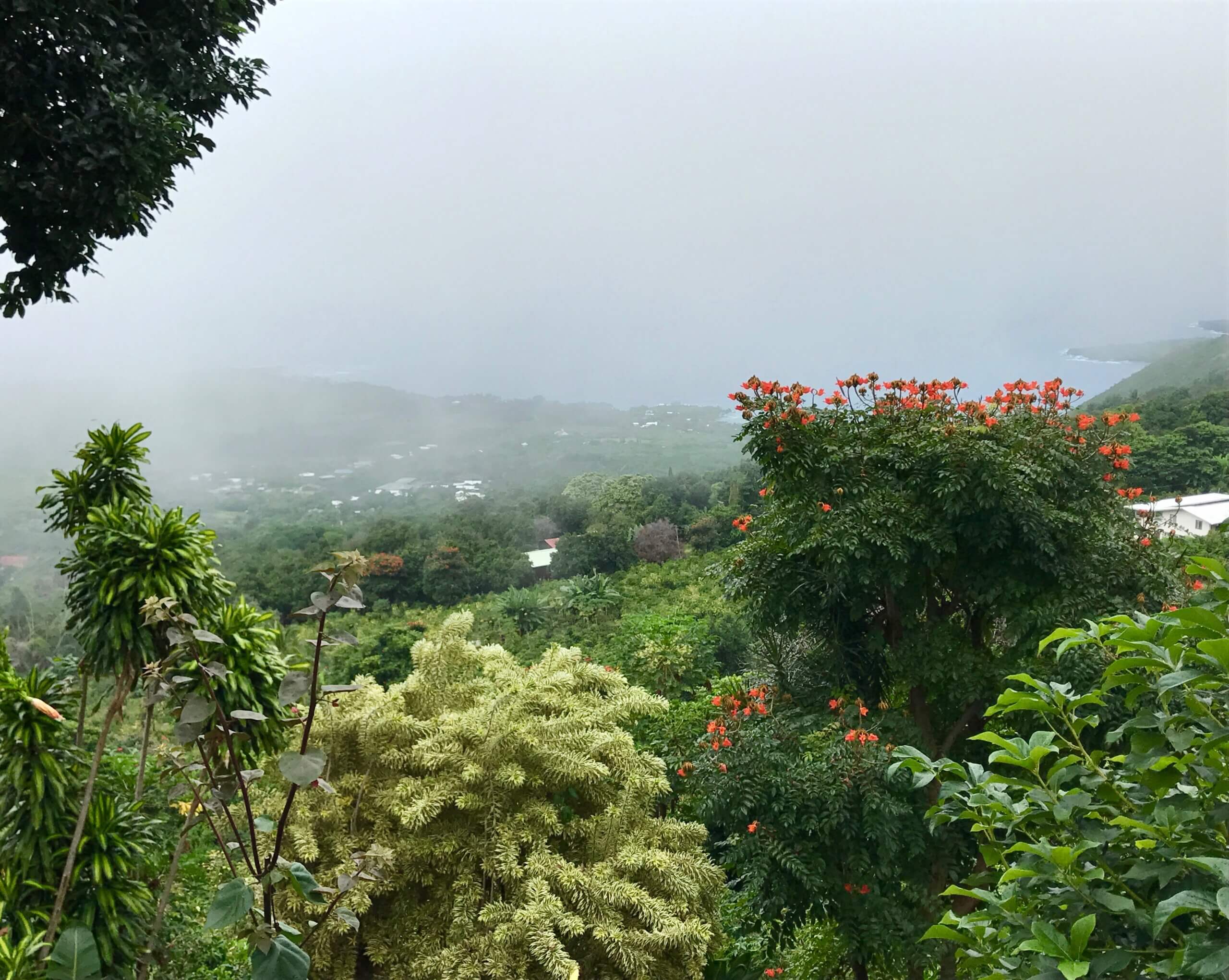
Staying a night near the park here is a nice way to explore more and minimize driving.
(Sidenote: If you’re looking for a drive that’s worth every mile, don’t miss Maui’s Road to Hana.)
The truth is most people allow far too little time at Volcanos.
With ancient petroglyphs and lava tubes you can walk through, you may find this to be the highlight of your Big Island trip. I regretted trying to see it en route to Hilo. Spend one night at least!
Since you’ve already driven 90 minutes to the park, take the rest of the day here to get out and explore it. There are dozens of incredible hikes for every age, ability, and interest here.
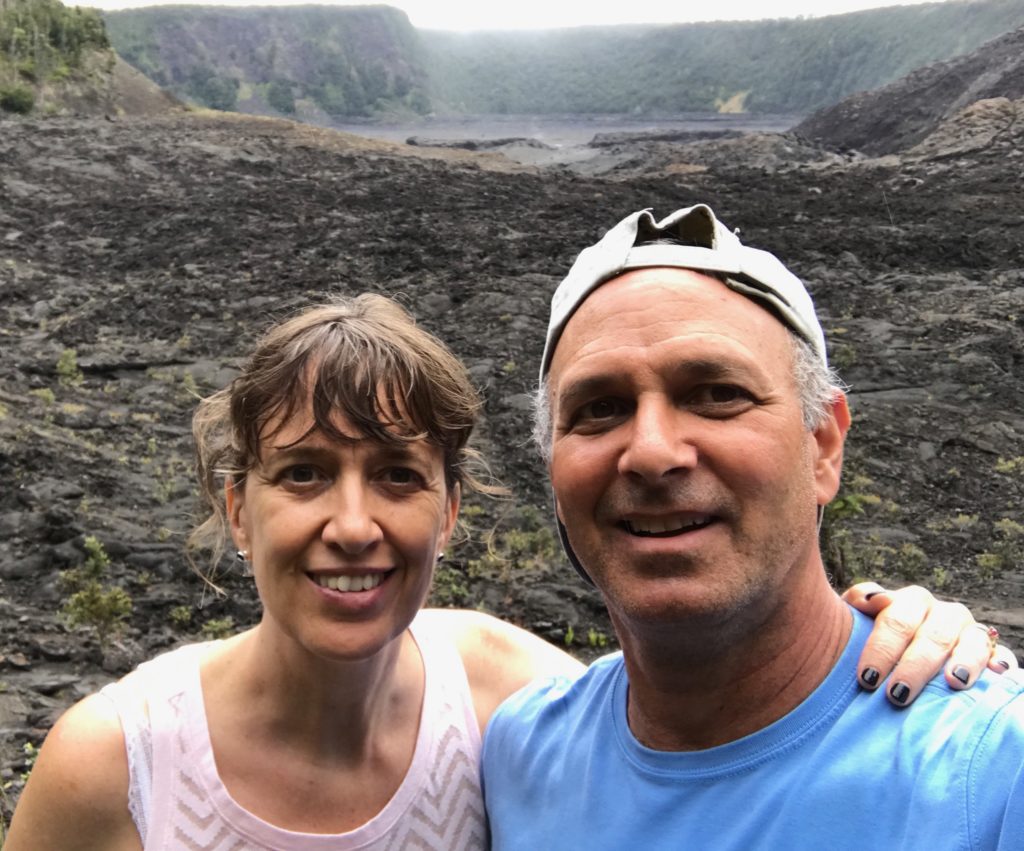

We packed a picnic lunch and hiked the moderately challenging Kilauea Iki trail, a four-mile loop that took us about 2.5 hours, including time for a picnic and so many stops for gawking.
We descended through a lush rain forest to the floor of the solid—but still steaming—Kilauea Crater lava lake and then back up through the rain forest.
Will I see Lava at Volcanos National Park?
It depends! Eruptions come and go in the park. Up until a long, recent quiet period, Kilauea, here at the park, was the world’s most active volcano.
But as of June 2023, Kiluaea is erupting again!
The lava flowed for more than thirty years until the 2018 eruption of Kilauea, which devastated 700 homes in nearby Puna.
We were fortunate to have seen it for ourselves during our visit, watching the lava rush into the ocean after riding rickety bicycles after dark to get there. After a long quiet period, in fall 2021, the lava flowed again with a new fissure within Halema’uma crater.
Then in September 2021, Mauna Loa also began errupting for the first time in 38 years. But alas, as of December 15, 2022, it has stopped.
But, even if there is no active lava flow today, I promise you won’t be disappointed by your time in this unique and wonderful park!
Where to stay near Volcanos National Park
In a volcano rainforest, of course!
The Volcano Village Lodge is just a 6 minute drive to Volcanos National Park. Think garden waterfalls, koi ponds, and a hot tub.
Guest review: ““Absolutely LOVED the setting – romantic individual cabins with glass walls to look out into the woods. Owner was incredibly nice too and makes/delivers breakfast to you each day! Close drive to Volcanoes National Park too.”
—Andrea, Feb 2021
Check price and availability at Volcano Village Lodge here.
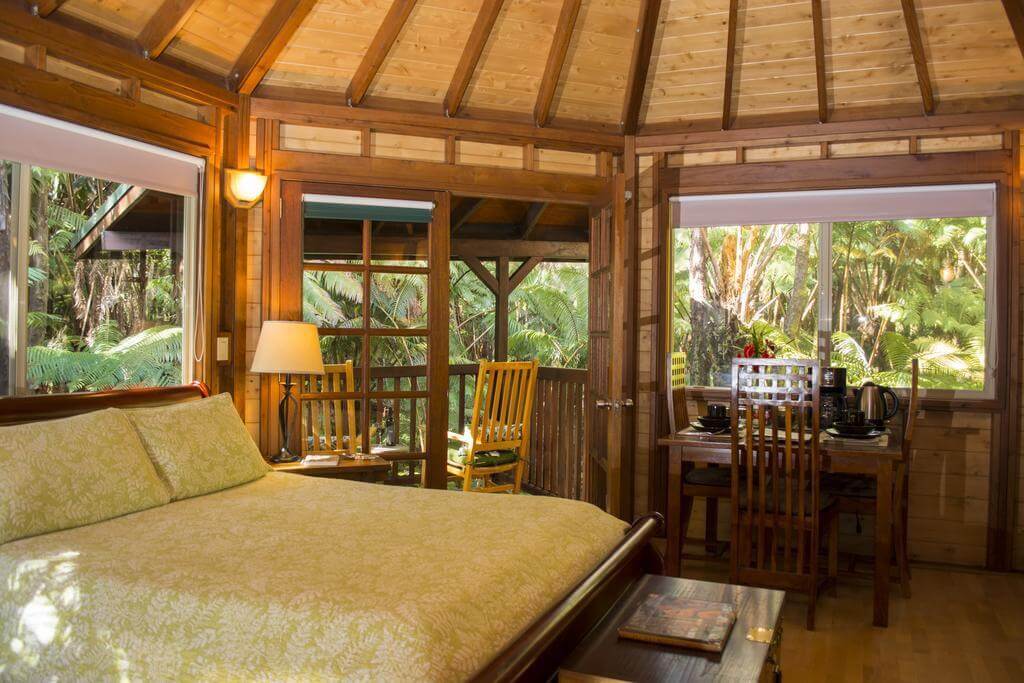
Otherwise, you can also stay in the park itself. You can read more about options here.
Day 5 Big Island: Tour Lava Tubes and Steam Vents
If you start at the Kilauea Visitor Center, you can enjoy a magnificent day driving the Crater Rim Trail in the center of the park.
You’ll explore steam vents, sulphur banks, lava tubes, and so many scenic overlooks like nothing you’ve seen before.
Take this day at your own pace. Add in ranger tours and hikes as the spirit moves you.
Be sure to stop at the Kilauea Iki Overlook and walk through Nahuku (Thurston Lava Tube). The Pu’u Pua’i Overlook is impressive, too.
If you’ve got a group where some like to hike and others prefer to drive, drop the hikers out for the half-mile walk on the paved trail at Pu’u Puai’i to walk Devastation Trail. The driver can pick you up at the outlook a half-mile away.
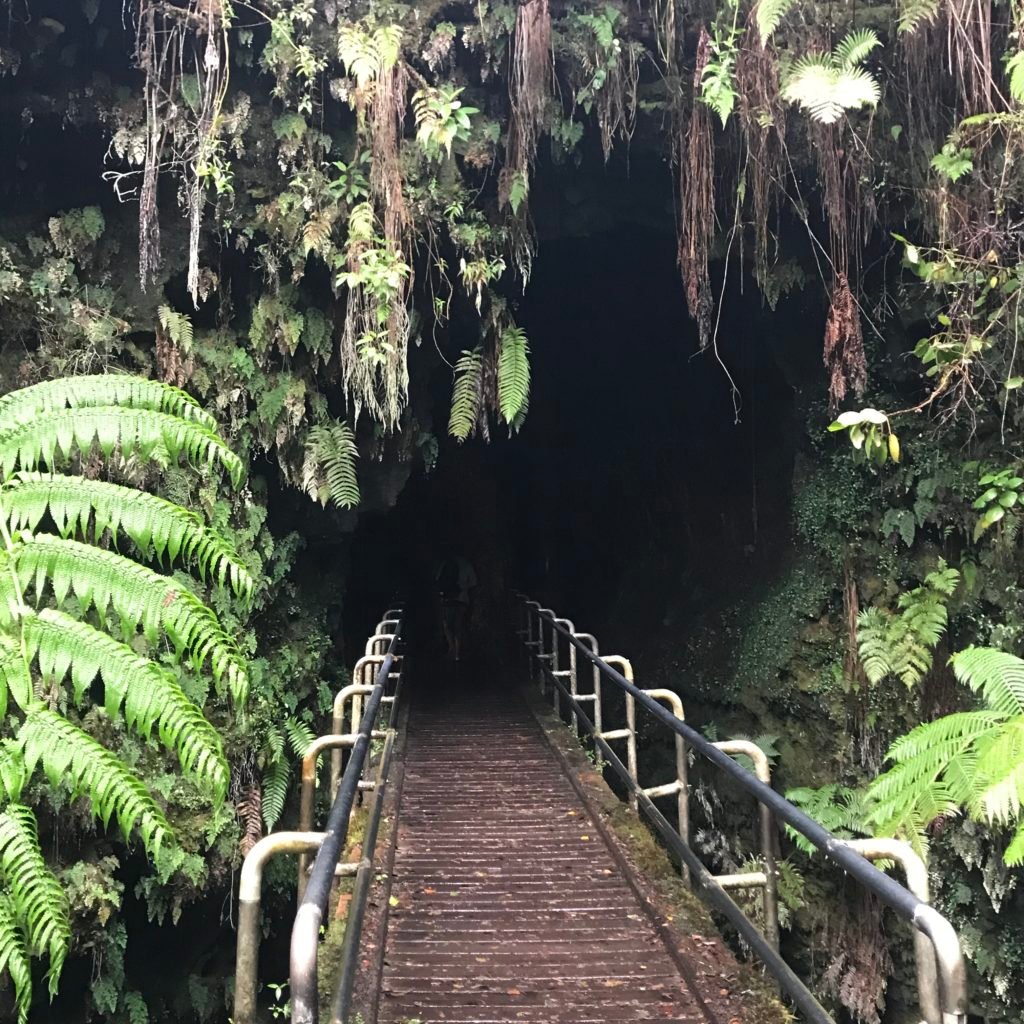
Day 6 Big Island: Waterfalls and Sea Turtles
If downtown Kona seems a bit touristy (ouch…such expensive parking) on the dry side of the island, Hilo is its polar opposite.
This is old Hawaii at its finest with ramshackle shops and rain. It’s where the rainforest on Big Island is.
Folks who live in Hilo tend to roll their eyes a bit at the tourist mayhem in Kona. They prefer the lush rain forest and waterfalls only found on the east side.
If you’re heading back to the airport tomorrow, skip ahead to recommended activities for Day 7 below. Otherwise, spend a few hours exploring the Hilo area today.
Carlsmith Beach Park is everyone’s favorite area where you can snorkel and see sea turtles on this side of the island. Plus, you’ll find far fewer tourists here than near Kona!
Be sure to see the spectacular Akaka Falls in Akaka Falls State Park. Richardson Beach Park offers a black sand beach with wild ocean and lava rocks for climbing.
You’ll find Akaka Falls State Park about 11 miles north of Hilo.
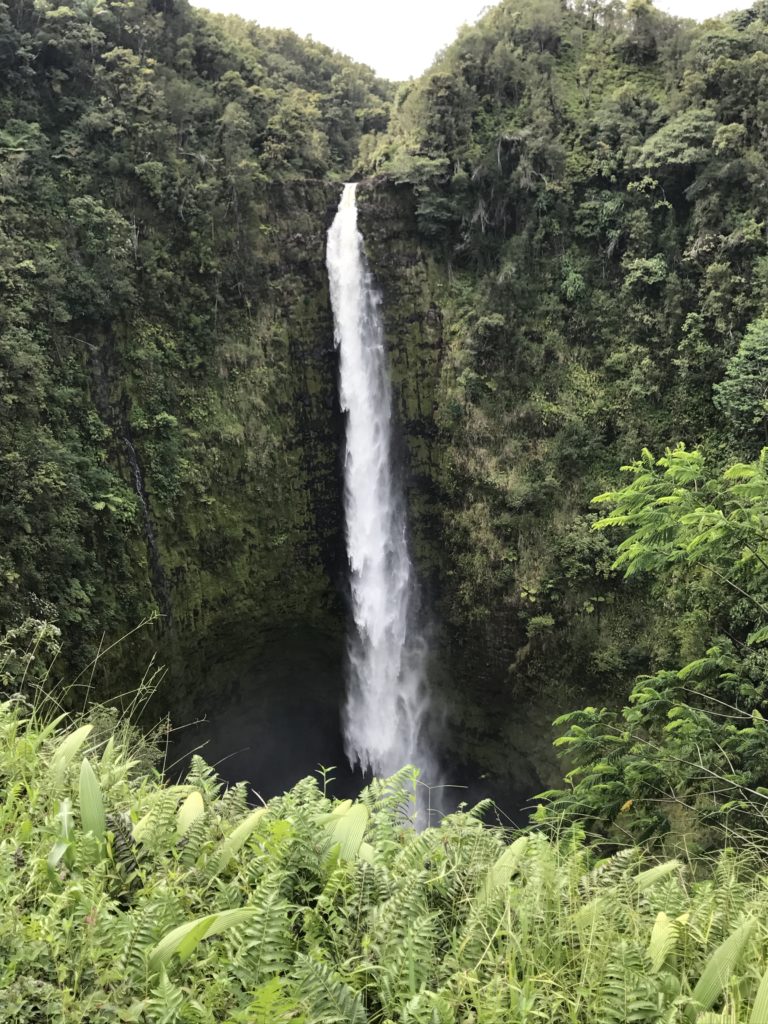
Sadly, the interconnected tide pools at Kapoho in this area were destroyed in the 2018 volcanic eruption here.
Where to Stay in Hilo
1. Oceanfront Peace of Paradise. Watch the surfers gliding over the waves from the hammock of your lanai here.
Just a few short miles north of Hilo, this oceanfront property sits on one of the most gorgeous oceanfront locations in the area. (In winter, humpback whales come so close you can look into their eyes.)
Guest review: “Saul’s place is amazing. There is something about it that makes you feel at home. It has a soul of its own. Simple but total luxury of views and morning sunrises from your own bed.”
—Auerlie
Check prices and availability here.
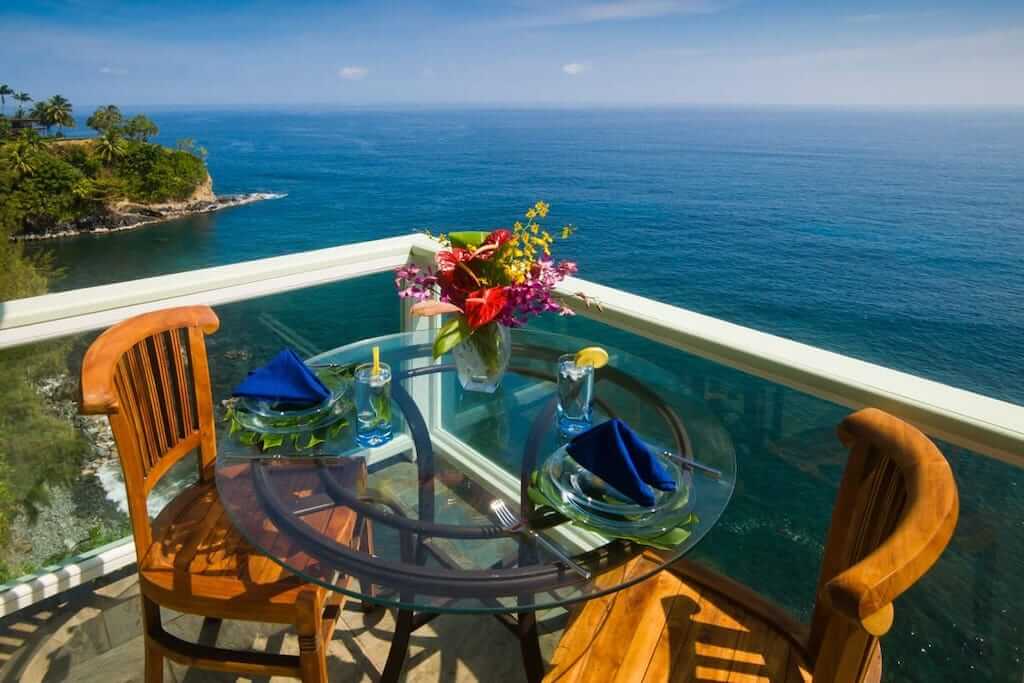
Or:
2. Castile Hilo Hawaiian Hotel. Looking for something more upscale? Book here. Located in beautiful Hilo Bay, the hotel is just minutes from town but offers incredible views of both the ocean and Mauna Kea Peak. You can check prices here.

Day 7 Big Island: Drive the Hamakua Coast
Big Island’s wild Hamakua Coast is memorable. It’s up to you how far north you want to drive today.
Whatever you do, spend an hour or two at the Hawaii Tropical Botanical Garden past mile marker 7 at Onomea Bay on the old coastal highway here.
Not really a gardens person? Already seen lots of beautiful native flowers? It doesn’t matter. Go here anyway.
I am a gardens person and it’s the most stunning botanical garden I’ve ever seen. Photographers and nature lovers worldwide flock to this 40-acre natural greenhouse home to 2,000 species.
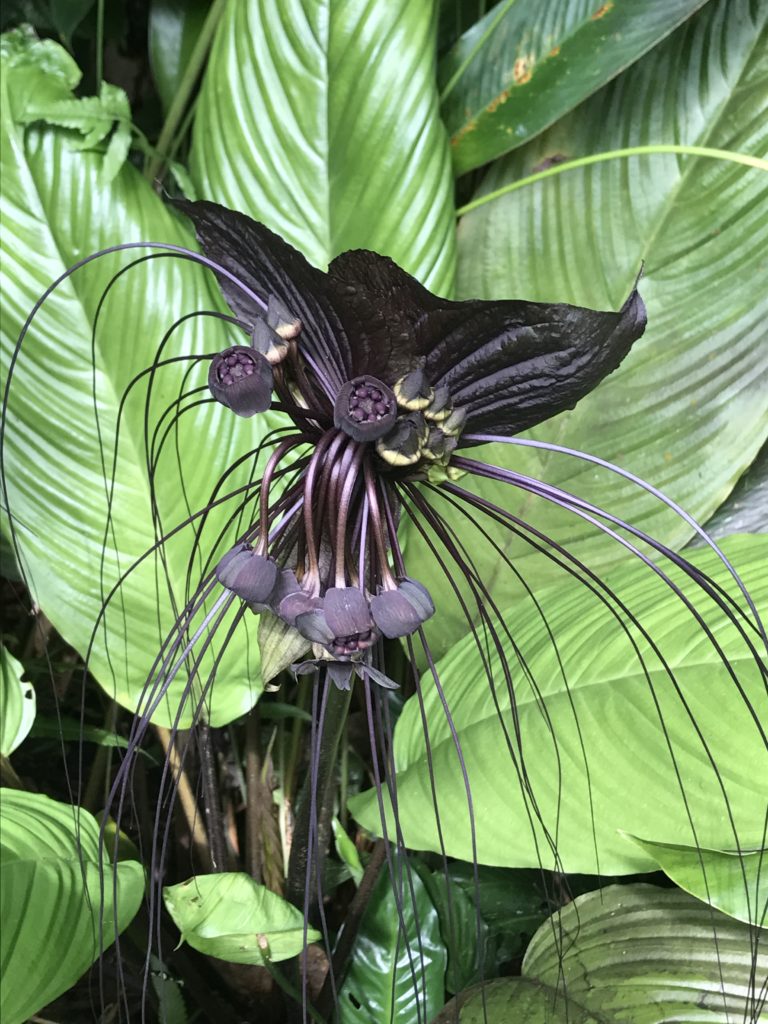
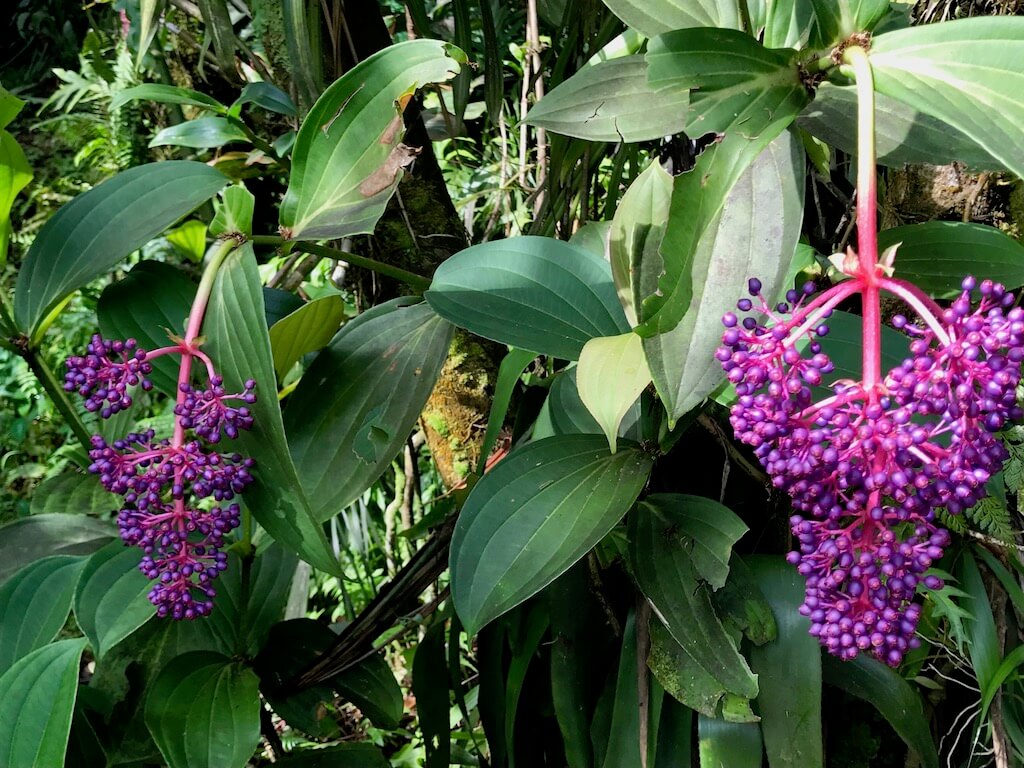
North of the botanical garden, you’ll find countless opportunities for short driving detours if you’re chasing waterfalls today. Stop into Honoka’a, the biggest town on the cost here for a meal or a coffee.
(I also highly recommend the What’s Shakin’ food stand north of Hilo en route to the botanical gardens for smoothies and wraps that are worth the cost.)
Honoka’a is the gateway to the Waipi’o Valley, one of the Big Island’s wildest and most scenic destinations.
However, to get there, you’ll need to ride in by horseback or bicycle. Otherwise, if you’re not planning to venture into the valley, take highway 240 to enjoy a scenic lookout.
Mahalo, Big Island for a memorable tropical adventure.
FAQ
1. How many days do you need for the Big Island?
At least five days. As the largest Hawaiian island, you’ll definitely want time for beaches and snorkeling on the Kona side and waterfalls and rain forest on the Hilo side with a stop at Volcanos National Park.
2. What is the Big Island known for?
Volcanos, of course! Kiluaea, in Volcanos National Park is the most active volcano but Mauna Loa recently errupted as well.
There’s a good chance you’ll be here to see the bright orange flowing—which is incredible—but Volcanos National Park is totally worth visiting even if there are no current erruptions.
3. How long does it take to drive around Big Island?
Driving around the whole island will likely take you around eight hours. Remember that this is called The Big Island for a reason. Its’ 4,000 square miles!
4. What’s the best time to visit Big Island?
Room rates drop considerably between September and November…just after kids go back to school but before winter break. September still offers warm ocean water!
5. What should you not miss on the Big Island?
- Volcanos National Park
- Waipio Valley
- Green Sand Beach
6. What’s the best way to get to the Big Island?
Since Southwest opened up routes to the Hawaiian island in 2019, Hawaii fares have seen a big decline in prices, which is great news for travelers.
If you live anywhere besides the west coast, you might compare the coast of a direct flight to the Big Island from where you live to a cheap flight to LA or San Francisco and then a separate fare on Southwest, Hawaiian Airlines or Alaska Airlines to the island. (I’ve seen those for $200!)
If you sign up for an Alaska credit card, you can take advantage of Alaska’s companion fare for your Hawaii trip. Your second ticket costs just $99 plus taxes.
Like this post? Pin it for later!
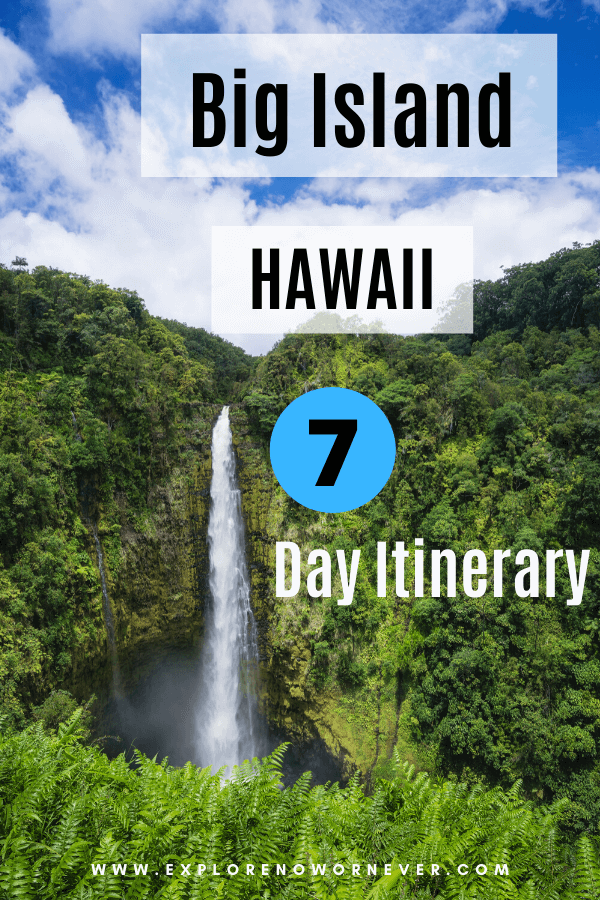
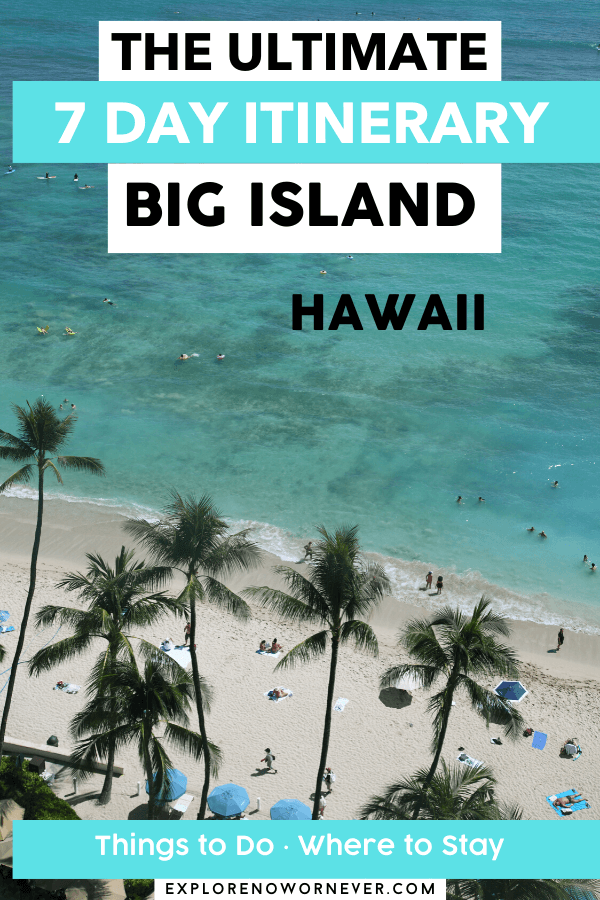
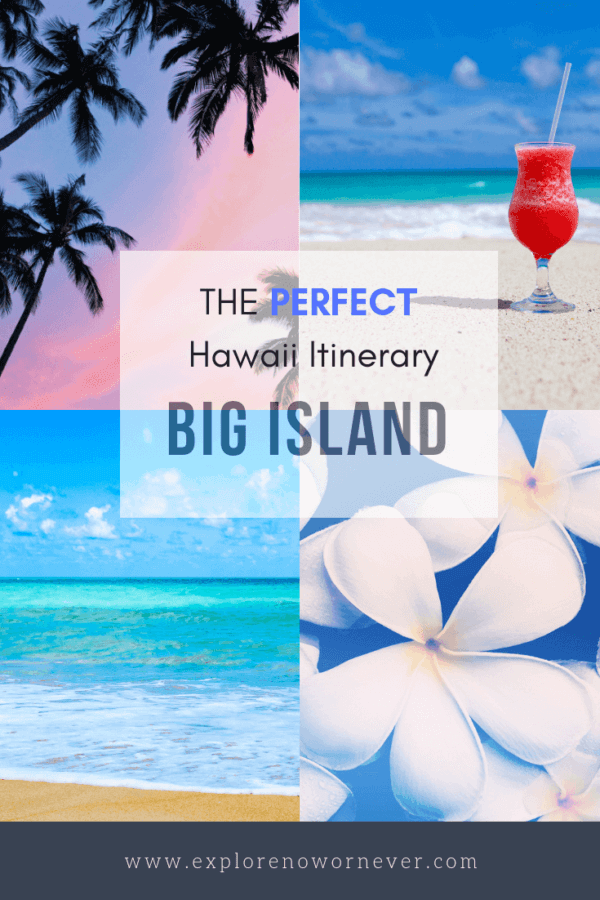
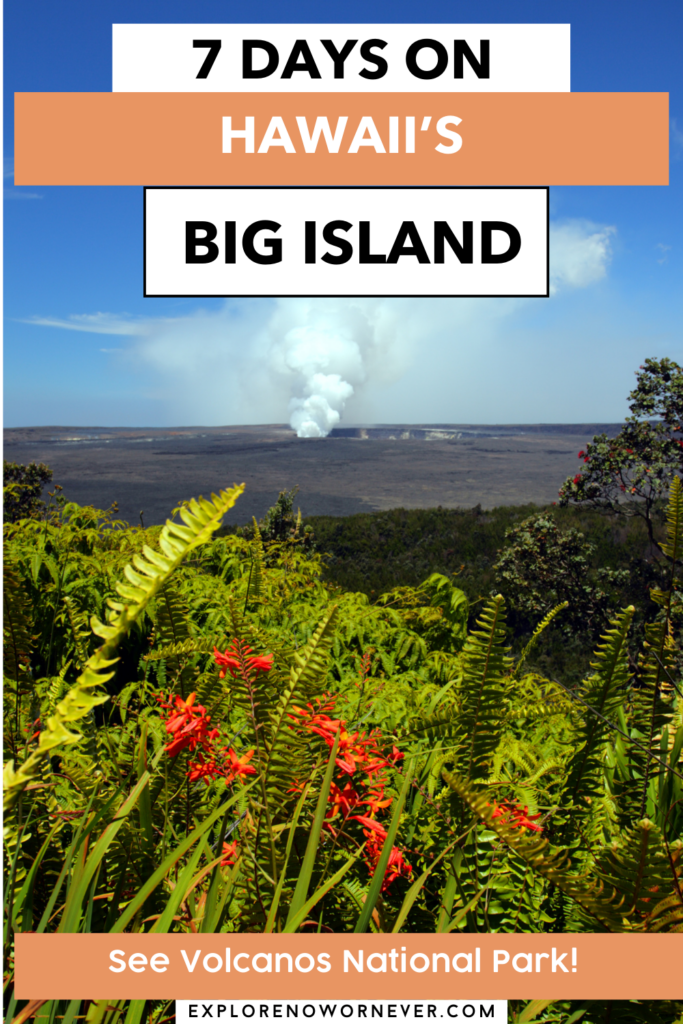
Thank you for such as insightful and informative (not to mention easy to read) article!
Thanks so much for reading, Kathy!
You blog goes to show there are more than one way to take a vacation! Great tips. Love the read!
Thanks for reading, Brian!
A very inspirational piece for the Big Island, of which we don’t hear as much. I so appreciated the juicy historical tidbits sandwiched in between the must-sees and do’s. I actually live vicariously through both the very colorful writing, as well as the photography, so I really appreciated the large photos that sucked me in. The video of Hilo made me want book my next travel plans there. Thank you for sharing your wonderful travel tips to the Big Island!
I’m so glad this post spoke to you Nicole. Thanks so much for taking time to read and share the love 🙂
Just one more thing to add to the “do not miss” list is a horseback ride into Waipio Valley in the northernmost area of the Big Island. The road down to the valley is so steep that normal cars are not allowed so they pick you up in special vehicles and drive you down to a valley lost in time. The scenery is spectacular and incredibly lush as there are waterfalls cascading down the cliffs. Some houses still don’t have running water because they use the water from the falls. You ride past taro farms and the horses wade through streams and sometimes the paths themselves are streams. The guides talked about growing up there and one was planning on going boar hunting that night. Truly amazing! https://www.tripadvisor.com/Attraction_Review-g499459-d561870-Reviews-Na_alapa_Stables_Waipio_Valley-Kukuihaele_Island_of_Hawaii_Hawaii.html
I’ve heard of this! We unfortunately ran out of time to see Waipo on this trip, but it’s on the list for next visit. I appreciate you sharing the link 🙂
Hawaii is at the top of my list of places to visit so I will definitely reference this post when I plan my trip! Thanks for sharing.
Thanks so much for reading, Laura! 🙂
Very cool, Chris! Love that you were introduced to rambutan through your host. Super useful tips, too.
Thanks so much for reading, Debi!
There’s a free parking lot in Kona near the church, right behind the paid lot next to the market stalls.
Thanks for sharing, Christine. Good to know!
Sadly kapoho tide pools were destroyed in the 2018 eruption.
Thanks so much for letting me know, Anthony. That is beyond sad. I’ll update the post now.
Hi Chris. I’ve read both this Big Island blog as well as your blog on Kauai. Both are so informative and offer great ideas for a few days or a week. So torn on how to spend our 7 day vacation coming up first week in May. We’ve already been to both Maui and Oahu and it’s been on our bucket list to get back to see the Big Island and Kauai. Would you recommend we pick one or the other and stay there the entire 7 days or split the trip between the two? We may or may not get back to HI in the future so trying to decide if we would get more out of the trip to stay in one place and see a lot or split the trip and see some. I realize it comes down to personal choice but we are on the fence. Can you push us to one side or the other? 🙂
Hi Renee, the good news is that you cant make a bad decision 🙂 With just 7 days, I’d maybe recommend you choose just one island so you don’t lose a day due to an extra airport run. And I say this as someone who still tends to try to do and see too much on every trip! Kauai is my favorite island because it’s so undeveloped but there is no night life there. The best reason to go to Big Island, IMO, is to see the lava flowing right now at Volcanos National Park. The lava flows on and off and right now it’s ON! I hope that helps.
It does help, Chris thanks so much for taking the time to reply. I agree splitting the trip wastes precious time dealing with the airport island hop, rental cars, new hotel check in’s, etc… Your advice pushed us over to the side of picking one island and we were pretty sure that was the way to go as well. Now to decide which one! We are both hiking and nature lovers and prefer the outdoor natural wonders more than we do tourist areas and nightlife. Kauai sounds like the perfect fit for that and would be a very easy decision if it weren’t for your last several sentences regarding the volcanos. Did I mention my husband is a Geologist?? 🙂
Hahaha!🤭 I hope you report back after your trip and let me know what you decided. It will be fabulous either way!!
My wife and I and another couple (all in our mid-60’s) are visiting the Big Island in May. We are outdoors and hiking enthusiasts and this article is very helpful with some ideas for our outdoor adventures.
Thanks for taking time to let me know, Dan. I wish you a magical adventure!
Thank you for this article! We are going for the first time in April for 7 days with our 3 teenagers and we’ve been trying to decide what to do in so little time, and what is worthwhile. This is a huge help! You didnt mention the Mauna Kea summit, or luau’s. Are they a “must-do”? Are there other ways to experience the culture other than expensive luao’s? I fear my teens will be synical and the money would be better spent elsewhere.
Hi Nadine, If you’ve never been to a luau, I highly recommend one! I’m more familiar with opportunities on Oahu and Maui for luaus but I’m sure you can find one near Kona. With 7 days, I’d put Mauna Kea lower on the priority list than other sites recommended in this itinerary but a sunset and stargazing there would be truly wonderful! Bring warm clothes though. Mauna Kea is the highest point in the Hawaiian islands. It snows there!
ok, more great tips to know! Thank you so much for the insight!
this was tres helpful. i have been before but wanted to focus more on the eastern coast. does anyone know of a jeep tour of waimea valley? we have 6 days/7 nites there – any suggestions on how many nites to spend where on the east coast? Tks, Pam
Hi Pam, I’m not aware of any jeep tours but I hope someone pops by to help who really knows the coast there 🙂